Sweet corn or baby corn is regarded as a short time crop. Farmers can grow four crops in a year. We’re going to take a closer peek at the method to grow baby corn in your field. It can grow wherever regular corn can be planted.
Baby sweet corn is actually the early picked maize. Growing this crop is similar to regular maze farming. Sweet maize seed is planted directly in the land. But, most of the regular varieties are not profitable. Hybrid and specially modified species are more suitable as they produce more cob than others.
However, if you want to farm this as a commercially profitable crop considering the best varieties will be a great strategy. Now, learn everything you need to know about baby corn farming.
How to grow baby corn:
Nowadays growing baby corn is getting more prominent in distinctive regions. Thailand is the first country to start producing baby corns. Surprisingly, in Northern America, Japan, India and also in Europe the exporting sequence is rising day by day.
You should know that,
You can grow baby corn as-
1) the primary crop,
2) the secondary crop.
Seed Planting Season: The seed sowing process can be accomplished in any season when optimal temperature ranges between 22°C to 32°C. Read Perfect Weather and Best Seasons For Growing Baby Cron.
Basically, farmers cultivate it as a supportive crop after harvesting the main crop. Growing baby corn is beneficial for developing the land organically for the next crop and also brings profit.
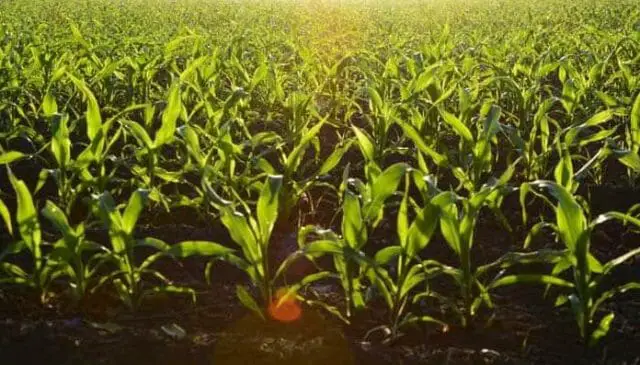
We tried to break down all elements and pieces of information you will need to start your own firm. If you want to grow corn profit or as a primary crop you need to learn about the best conditions. Let’s start with the optimal soil condition to grow baby corn-
The Best Soil For Baby Sweetcorn Cultivation:
Firstly, I have to admit that all the soils are proper for baby corns. But loamy and sandy soil containing the ph of 6-7 which is suitable for the growth of this mini corns.
On the other hand, drained black soil can be used for producing purposes but wet poor drained lands are not worthy of the growing baby corn plants.
Here, I have described two planting methods based on soil. As well as the method to cultivate baby corn along with other crops.
Selecting and Planting Seed:
As sweet corns are becoming our regular vegetables in our everyday life. So it has some potentialities which inspire us to cultivate them.
This corp can be framed throughout the world if the mists of the field and irrigation provisions are right.
- If the soil contains much moisture at planting time, the weeds should be planted from a 2-5cm row.
- On the dry soil, the seed should be set 5-8cm deep.
Normally, people tend to sow seed directly on the field. But, you can also grow seedling indoor or in your backyard. The one drawback of this process is, that the root of a maize tree is weak. So, I do not suggest it to any beginners.
After planting seeds, it will take weeks to germinate. In this time water properly. If the sun emits too many lights, cover the land with a shade.
Now, at this stage:
- Do not let the surface dry. Read: Irrigation
- Apply Fertilizer on time. Read: Fertilizer
- When the plant is about 10-12 cm long perform weeding. Read: Weeding
Now the question is how much seed to sow?
To get a better result of around 20 to 25 kg of seed needed per hectare field. And it can yield between 10 and 12 tonnes of corn in 2 months.
Places with less rainfall and crumbly soil, seeds need to be planted like a V-shaped furrow in listed methods. Suitable places to grow baby corn with less rainfall and crumbly soil are good for plantation.
Depending on the soil type, here are the two most popular seed planting methods.
Plantation Methods:
Generally, there are two planting methods:-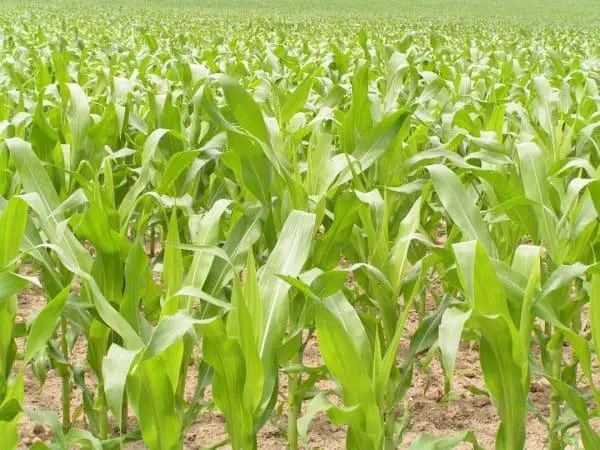
Facade Plantation:
This plantation method is based on heavy soil types. Because the baby corns grow well in crumbly & brittle lands. The corn scoping has to be 50x50cm.
The number of seed ranching is 3-4. After 14 days, it needs to be thin out to preserve 2 bulbs.
Recorded Plantation:
This method is based on the rainfall culmination. The procedure is suitable where rainfall is limited and the soil is good drainage. The course field is made by a dual-core strip edge.
The notch between the series is 50 cm and between weed, it’s 25-30 cm. Subsequently, it needs to be thin out to conserve 2 bulbs after 14 days.
Note: For both of that planting method @ 50-65 Kg/ha Nitrogen at the time of sowing can be applied.
Now, before learn about caring and harvesting. Here, some general questions or misconceptions that most of the beginner have.
What is baby corn?
It is small (yellow) and adorable. Sweet baby corn comes from regular corn, harvested early while the stalks are still small and immature.
Baby corns are regarded as the non-legume and calory vegetable. It’s also recognized as mini corn, young corn, sweet corn, or candle corn, etc. It contains similar nutrients & values like cabbage, carrots, and tomatoes. It has a great potentiality as a food ingredient and cooking purposes mostly in China.
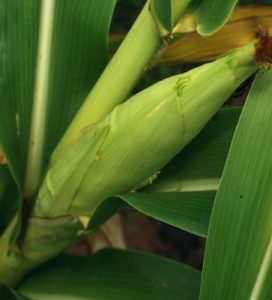
Baby corn plants characteristics:
- The little ears of baby corn are naturally young ears from normal-sized corn plants.
- The plant size depends on its species.
- Special hybrid kinds of the plant are more suitable to start corn farms or gardens.
- Because they can produce average 7-15 ears in a single seedling.
Sweet Baby Corn Varieties:
Suitable species to grow baby corn, which has a reputation to grow multiple ears. It has numerous varieties. The hybrid maize is more fit for prospective baby corn due to their greater quality, similar size ears.
Most Popular Species: The hybrid corn breeds which tend to produce more multiple maize are ideal for baby corn plantation.
Some Renounced varieties are Golden Midget, VL42, Minipop, Him 128, Chires Baby, VL Makka 16, CHH -72, Chinese Baby corn, Ganga -11, FH-3104, and Bonus hybrid, etc.
Perfect Weather to grow baby corn:
The cornfield requires at least 22-32 degrees Celsius for healthy growth. But overheated regions which have temperature up to 30-degree Celsius isn’t really a good place for the horticulture of the baby corns.
Best Seasons For Growing Baby Cron:
Baby corns can be produced in the whole land 4-5 times a year, only if the rainfall 1,000-1,200mm/year. Baby corns can be horticulture throughout the year.
- If the balance of irrigation condition & the moisturization of the land is defined it can be cultivated within January-October.
- If you can’t measure all the conditions than the process can be started between June-July and September-October.
- But with proper care and guidance, the methods can be applied in the 2nd week of May and the 3rd week of April cause at that time the stock level is really high.
The intercropping method in sweetcorn farming.
Yes, You can grow baby corn with other crops. Young corps have numerous potentialities. For having a short growing process, you can grow it 3 to 4 times a year. Which may cause some issues. One of the issues is market demand may fall.
Another thing you may agree with us that the soil may lose fertility. So the profitable way to grow baby corn with vegetables in one or two seasons in a year. And besides this,
 There are several benefits
There are several benefits
- In this way, one can utilize land moreover you can be profited financially.
- Farmers can cultivate more than 3 other corps at a time in the same land.
- This is helpful to maintain soil fertility also increases fertility.
Short duration crops like broccoli, Gladius, Sugar beet, Spanish, Cabbage, Potato, Garden pea, Onion, Carrot, Turnip, Radish are the common corps, that can give you tremendous results. Especially in 2: 2-row ratios is handy. Here is some example of intercropping: baby corn=>carrot(2:2) ->baby corn=>pea (2:2).
Caring young corns for better production:
- The planted corps have to be at a natural distance from one another cause when they’ll grow 2-4 cm long of 10-15 ears they could lean on each other for that it’s impossible for the factors to help its growth.
- It can be planted in blocks for pollination rather than a single row or two. At 30 to 36 inches apart.
- Any fertilizer or pesticides can be used for the purposes but if your corps have some serious issues then mineral fertilizers & composts manures can be used.
- On the contrary, baby corns don’t like water stagnation so the irrigation process should have occurred when it’s mostly imminent. 2 Seeds shouldn’t be planted in one hole cause both seeds can be sprouted in this approach.
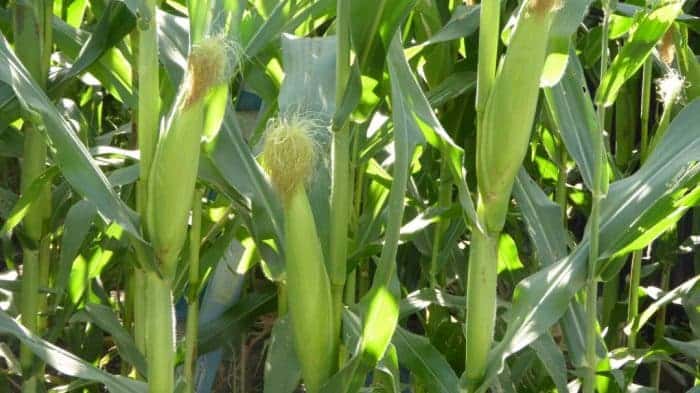
grow-baby-corn-care
Moreover, the propagation procedure is done with the seedling technique.
The average yield in growing baby corn is about 6700kg per hectare and the green fodder is about 33 tonnes per hectare. To keep this level up you should have a good variety of selection and a modern way of cultivation.
Fertilizers:
It’s just harvested at a very immature stage before it’s meant to fertilize. The fertilizer schedule is mostly recommended for grain corps. Additional fertilizers aren’t needed for transplantation. But if the corp undergoes any fatal causes than FYM-15 can be used per hectare land.
Having said that, you could apply nitrogen 150-200 Kg/ha in 3 equal steps. which ensures greater grow baby corn.
- At the time of sowing can be applied.
- When the plant is on knee-high.
- And in the pre-tasseling stages.
And some, phosphorus and potassium can be applied at the usual rate of 55-60 Kg/ha and 40-45 Kg/ha.
Irrigation:
- The irrigation process of the baby cob corns has to be moderate. Because young corps can’t tolerate water stagnation.
- As growing baby corns in a loamy & dry soil so the field has to be well internal drainage. Seedings have to be 3/4 meter height & the corps.
- Irrigation isn’t actually necessary except there are no drying conditions special irrigation methods must occur weekly during the summer season.
Weeding:
Weeds are known as unusual & unwanted parts of the growing baby corn. It can also cause pests and diseases.
- We can demote corn yield by as much as 50-80% if left unchecked.
- It’s really tough to control the whole system in the wet or rainy season.
- In the scenario, pests like shoot fly, stem borer are the great threats to the baby corns.
- In this period herbicides play a vital role to stop the weeds.
- By spraying carbaryl, 700 grams with 700 grams of water will stop the harmful attacks of the pests.
Detasseling:
The process is done by removing all the tassels from the corp. Detasselling starts when tassels emerge. The scheme needs to be done very accurately so that it can’t harm the plants anyway.
Pollination is essential for all crops, but it is not necessary for this method of farming. When the age of the tree is 40-45 days old, male flowers come in every tree, cut the male flowers carefully.
Detasseling is also known as “male inflorescence”. It’s a crucial operation is to avoid pollination removal of the male inflorescences. But the tassels can be used as the feedings of the cattle cause it contains great food value & nutrition. The main function of the cultivation of baby sweetcorn is to break male flowers.
Harvesting:
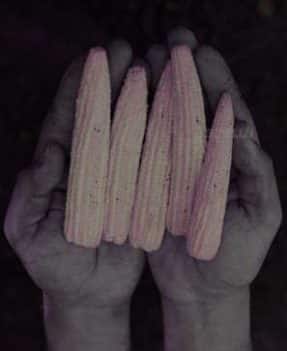 Baby corn requires being hand-picked, making it a real pain in the ass. Typically, the harvesting starts after 7 weeks of sowing seeds when the silks emerge (2-4 cm long).
Baby corn requires being hand-picked, making it a real pain in the ass. Typically, the harvesting starts after 7 weeks of sowing seeds when the silks emerge (2-4 cm long).
- Usually, it’ll be convenient for harvesting, 1 to 4 days after baby corn silk appears when the color of baby corn turns yellow and the size of 2-4 cm.
- The plucking process must not damage the plant as well as other cobs.
- Following a week or, two of the initial yield, other cobs will be ready for collection.
After each harvesting season, it should be stored immediately. Young corn behaves as vegetables, loses its cuteness rapidly. This is one of the most important things you should recognize.
Storing tips and techniques:
- Refrigeration is the best way to store these young corns. Because of this approach, the corps retain sweetness.
- It helps the corps to maintain it’s flavor, texture, taste for a week without losing any food values or quality.
- Unhusked sweet corn is better for refrigeration.
- It can be stored in cans or jars, kept in various liquid with salt or sugar.
Another way is cooked baby corn, which can be canned for marketing procedures in this form. Ha!ha!
Storing tips:
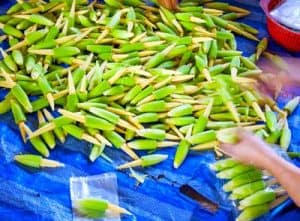
- Firstly, the collected baby corns need to be brewed or, boiled for 30-40 seconds.
- After that, the brewed corns need cooling down or, they can be packaged in freezer bags, zip lock bags or, kept in the freeze for refrigeration.
Please comment and share if you found this blog useful.
Now that, You know nearly everything about sweet baby corn farming. Don’t forget to share this with your friends! The modern farming method is still developing stage. And we badly need your help. You can share any farming method with us. Thanks for being with us, hope this will help you to grow baby corn.

Thanks ! well informative post. Help me with baby sweet corn farming.
Nice post. Thanks.
Thanks
Good Luck!
Thanks
welcome SAM OH
Thanks for the information in planting baby corn.
welcome.
Please suggest us for good variety of seed for cultivation. Please
Where do you want to grow??
Please reveal the difference between sweetcorn and babycorn
Same
Do I need to stake baby corn